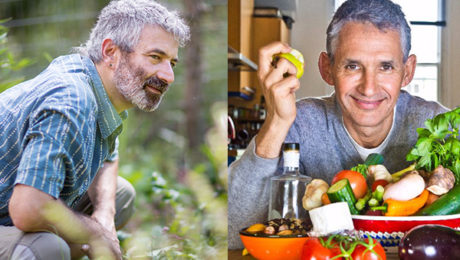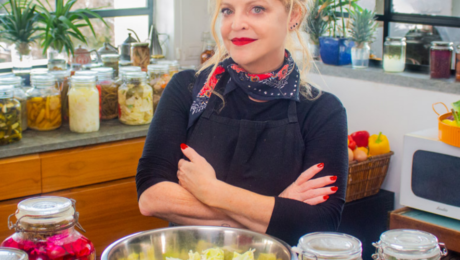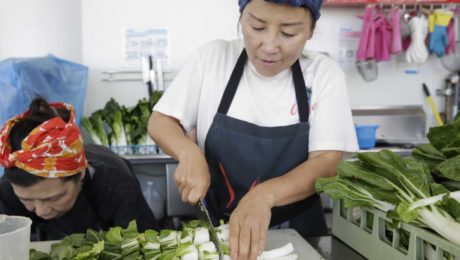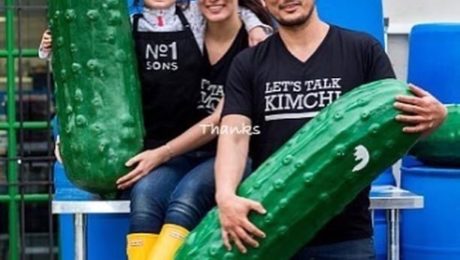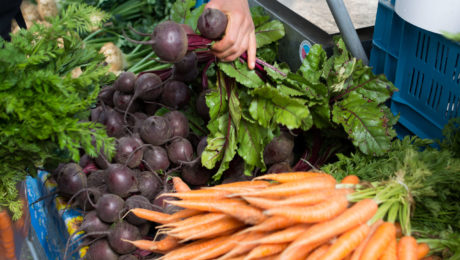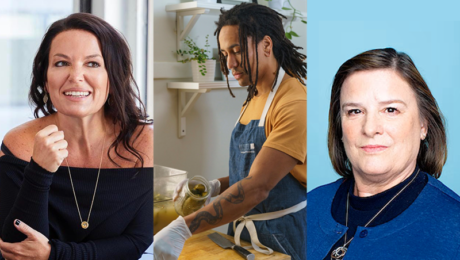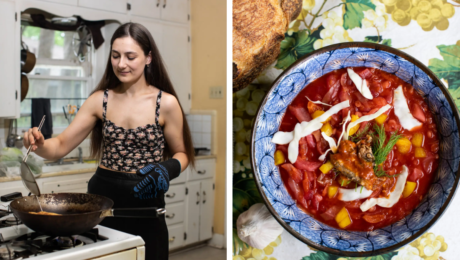Bringing Vietnamese Ferments to the U.S.
When demand in Vietnam for Song Huong Foods (SHG) fermented foods began to wane, brand owner Nguyen Le Quoc Tuan decided to take the brand overseas.
The 20-year-old ferments company is most famous for their ferments, like pickles, seafood, eggplant, sauces and pastes. But, after the pandemic, a number of Vietnamese stores selling SHG products shut down. So Tuan, knowing Vietnamese expats love to eat Vietnamese specialties, turned to U.S. exports.
After six months of food safety tests and certification from the U.S. FDA, SHG released in 32 U.S. states in December 2022, “just before the upcoming Lunar New Year,” Tuan said.
Their distributor, CTWS Group, an Asian food wholesale distributor, said it’s the first time fermented products from Vietnam are sold in the U.S.
Local production has been a challenge, so supplies are still sourced from Vietnam. Tuan’s goal is to expand in the U.S., eventually selling in Costco, then export to Japan, Taiwan, Australia, Russia and China.
Read more (VnExpress)
- Published in Business
“It’s Not a Niche Type of Food”
The modern consumer is not disconnected with fermented foods, they’re disconnected with the fermentation process. In a discussion between fermentation revivalist Sandor Katz and well-renowned epidemiologist Tim Spector, the two experts agree that, if gut health is going to improve, humans need to eat a diet rich in fermented foods.
“The thing that has disappeared from most people’s lives is familiarity with the process of fermentation. And because it has largely disappeared into factories, we imagine that it must require sterile conditions, require a microscope or a knowledge of microbiology,” says Katz, fermentation author and educator. “We project all of our anxiety about the idea of cultivating bacteria onto the process of fermentation, when in fact fermentation is a strategy for safety and people have been doing it with the simplest of facilities without any knowledge of microbiology for literally thousands of years.”
Katz and Spector, professor at King’s College London and author of the book “The Diet Myth,” discussed fermented foods on an episode of the ZOE Science & Nutrition Podcast. Listener questions revolved around safety. Consumers understand fermented foods are good for them, but are still leery about eating live bacteria.
“Fermentation is the hot craze in fancy restaurants across the western world. But these foods make us uneasy,” said Jonathan Wolf, podcast host and CEO of Zoe. “The idea of letting food rot and then eating it goes against everything our parents taught us. …Five years ago, when I started Zoe, I really had no idea what fermentation was. To be honest, fermented foods sounded like something I would have to throw in the trash.”
Wolf asked Katz why even talk about fermentation if it’s a niche. Katz, credited with revitalizing fermentation in the U.S. and Europe, disagreed.
“Every person in every part of the world eats and drinks products of fermentation almost every day. I’m not sure how you could call that a niche type of food,” Katz said, listing off popular fermented foods: bread, cheese, cured meats, condiments, olives, pickles, coffee, chocolate, vanilla, wine and beer. “Foods that are really everyday foods are products of fermentation.”
Most of today’s consumers are victims of what Katz calls the “war on bacteria…the indoctrination that bacteria are our enemies.” Fermentation, though, is an integral part of foodways all over the world. He adds: “Fermentation is an essential part of how people everywhere have been able to make effective use of whatever kinds of food resources are available to them.”
Healing Foods
Fermented foods and beverages are experiencing a popularity boost in part because of the growing health and wellness trend. Ferments have a high amount of nutrients and live microbes, which improve gut health. While there are some cases of proven health benefits of consuming fermented foods, Spector points out fermented foods have not all been fully tested.
Still, there’s enough evidence to indicate we should be eating fermented foods. Korea, Spector says, has one of the healthiest westernized populations. They’re eating an average of 36 kilograms a year per person. That’s an extra probiotic supplement of 20 species, including yeasts and fungi, things you won’t find in a health food store, Spector says.
“It helps your gut microbes (because)…you’re getting the prebiotic and the probiotic. The fertilizer and the seeds both at the same time,” Spector says. “That’s what’s unique about those sorts of types of fermented vegetables that we don’t often talk about. And that’s probably why they potentially have greater health benefits than just the pure microbes on their own. … It’s that double system of both feeding the original contents of your gut microbes, stimulating new ones to grow more of the good guys, and consuming these probiotic microbes that don’t live in humans. Just passing through has a beneficial effect.”
Spector compares those commensal microbes to a rich, American cruise ship passing through a poor, island community. They come in, spend loads of money to dispense through the local economy, then leave.
Live vs. Shelf Stable Products
Though products like bread and sauerkraut are fermented, that doesn’t mean all bread and sauerkraut are fermented. Highly processed, shelf-stable versions kill off the beneficial live microbes.
“There’s been an explosion in the UK of things like kefirs and kombuchas that you can buy in stores, and there’s a suspicion that many of them do not contain live microbes,” Spector says. Brands use ultra-fine filtration systems to get rid of microbes; they pasteurize products to ship it around the country; they add lots of sugars that inhibit the microbes; they make vinegars with such high acidification that it kills the microbes and the mother.
“It’s great to have these products, but I feel they could be exploited,” he adds.
Spector said there’s not a word for a true fermented food yet – he suggested using the term “live fermented food” – so consumers need to read labels at the grocery store. A kefir or kombucha can have between 10-30 varieties of microbes, but you may only be getting only one depending on what brand you buy.
Live ferments will generally be in the refrigerated food section. Heat processed, shelf stable foods are usually on the grocery store shelf.
Katz encourages consumers to steer away from bigger, national brands when purchasing ferments and instead buy from smaller, regional brands who don’t need to process their ferments to ship.
“The more educated you are, the more quality products you can find,” he says, advocating for people to research their food.
He points out the trend of the “lightly fermented soft drinks” can fool consumers, too. These drinks often have a high sugar content with no real benefit to the microbiome, Katz says. Though they can be a great replacement for traditional, sugar-filled sodas, you’re still drinking a lot of sugar.
“Anything sugar-sweetened, you really want to exercise restraint and moderation,” he says.
Katz ended the podcast with his five tips for anyone wanting to try fermented products.
- Don’t be afraid to try it. Katz: “Do not project all of the anxiety you’ve ever had about bacteria onto the process of fermentation. Understand that these are ancient practices that have been tested over time and that they are extremely safe.”
- Understand the conditions. Fermentation is about manipulating the environment for optimal growing conditions. Understand what they are to support lactic acid bacteria and avoid spoilage organisms.
- Don’t overthink it. Accept the simplicity of the fermentation process. Don’t obsess over what could go wrong.
- Experiment. Katz points out there are unlimited variations of fermented food combinations. “Don’t be afrait to play around.”
- Be creative. There are many fermented foods to incorporate in the diet. The hard part for beginners is getting accustomed to them. Try combinations that work for you – kimchi on eggs or pickles in salad dressings, for example.
- Published in Food & Flavor, Health
Serial Pickler’s Pickling Prowess
Israel scientific magazine ISRAEL21c got a tour of Noa Berman-Herzberg’s pickle paradise in her home kitchen. Berman-Herzberg, who uses the moniker Serial Pickler, has garnered a large following online (64,000 Instagram followers).
Pickling first piqued her interest when her grandparents ran a Jewish deli in Philly. Today she is a fermentation education and screenwriter, producing the culinary storytelling project “Sour Food, Sour Stories” where her guests talk with Berman-Herzberg while eating her pickles. They must each tell a story about something they felt they missed out on life (the Heber word for pickle means “missed out on.”).
Her unusual ferments and pickle pairings have attracted the attention of chefs from around the world. At any given time Berman-Herzberg has 100 different pickle varieties at home, from a fiery pineapple pickle to a pickle with a miso-coffee spread.
“To taste these fruits and vegetables is to feel you have landed the golden ticket to a Willy Wonka land of pickles. Flavors and textures are exciting and unexpected,” the article reads.
When Berman-Herzberg began, she says most people thought she was a “weirdo.” Today, she believes pickles have found their moment.
“We need to rethink the way we prepare food,” she says. “Preservation is going to be especially important as we head into a future of food shortages and climate change.”
Read more (ISRAEL21c)
- Published in Food & Flavor
SF’s Vegan Kimchi Queen
Aruna Lee’s path to running a fermented food brand is riveting, from her journey as an orphan to Buddhist nun to founder of Volcano Kimchi.
Lee’s story is detailed in a San Francisco Chronicle feature. Adopted by her teacher, she remembers sneaking out of bed in the middle of the night and digging up dongchimi, a winter radish kimchi fermented in large crocks buried in the ground. Later, as a nun in seminary school, Kimchi was communally made during gimjang, the process of kimchi making. The members of the monastery would prepare bulk batches in winter and spring in a large bathtub, storing it in underground crocks.
Curious about the world, Lee later left the monastery and traveled the world. She met her husband and eventually made roots in San Francisco. After the recession forced her to leave her career in the nonprofit sector, she began making kimchi for sale at farmers markets in 2014 without any professional cooking experience. Her organic kimchi is made similarly to how she learned in the monastery — including keeping it vegan.
“When you add fish sauce and shrimp paste, it overpowers everything and you don’t taste each ingredient. When you add simple ingredients, it’s balanced. It has a harmony of that flavor,” Lee says.
Read more (San Francisco Chronicle)
- Published in Business, Food & Flavor
10 Year Old Ferment Brand Shuts Down
After 10 years in business, DC-based ferment shop Number 1 Sons has closed, victim to one of the hardships for many small food producers: operation woes.
Number 1 Sons exclusively sold at farmers markets. Their seasonal ferments ranged from pickles, sauerkraut, kimchi, kombucha and vinegar.
They were one of the early adopters of home delivery when the pandemic hit, investing in six refrigeration vans and making over 30,000 home deliveries in 2020 and 2021. In 2022, they returned to selling at farmers markets. But owners and siblings Yi Wah and Caitlin Roberts said in a statement that they can no longer operate in their current space.
“Since 2012, we’ve made pickled and fermented food and drink that we’ve brought to our neighbors at farmers’ markets across the Washington DC area,” they said. “In the spring of 2020, we transformed overnight from a farmers market pickle company into a pandemic grocery delivery business. Such a business transformation is only possible with incredible community or massive resources. Guess which one we had? Our customers trusted us.”
In a statement, Wah and Roberts said: “many businesses are facing rising costs and an increasingly challenging business environment – we recognize our fellow food businesses that are continuing to evolve, innovate, and grind it out. Local independent businesses are key fibers in the community tapestry.”
“We are thankful, and in awe, of our customers, crew, fellow market businesses, and partners (microbes too!) who have been a part of this salty little thing. It’s been a gift to do this with you.”
Read more (Washingtonian)
- Published in Business
Does Organic vs. Conventional Matter for Fermented Foods?
Organic food is considered by some to be healthier and more nutritious than its conventional counterpart. But what about when that food is fermented? Does organic vs. conventional matter?
A new study reveals some surprising results: when it comes to fermented foods, “the quality of organic food is not always better than conventional food.”
Organic vs. conventional agricultural production is a hotly debated topic – some reports indicate organic food is more nutritious, but other research suggests the nutritional differences are not significant. Meanwhile, fermented foods are scientifically-proven to include higher nutritional value. “During fermentation, the concentration of many bioactive compounds increases, and the bioavailability of iron, vitamin C, beta carotene, or betaine is also improved,” the study notes. Fermented products also “inhibit the development of pathogens in the digestive tract.”
Researchers at the Bydgoszcz University of Science and Technology in Poland questioned whether fermenting organic food would change its nutritional output versus using conventional food. Their results were published in the journal Molecules.
Analyzing fermented plants (pickles, sauerkraut, beet and carrot juices) and dairy (yogurt, kefir and buttermilk), researchers measured the vitamins, minerals and lactic acid bacteria in the items. They compared using organic ingredients in one group to products made from conventional ingredients.
“Research results do not clearly indicate which production system–conventional or organic–provides higher levels of bioactive substances in fermented food,” the study reads.
Results were mixed. Lactic acid bacteria – the good, healthy kind – were higher in organic sauerkraut, carrot juice, yogurt and kefir. Organic kraut and pickles produced more vitamin C than conventional versions. And calcium levels were higher in yogurt made with organic milk.
But, interestingly, lactic acid bacteria levels were higher in conventional pickles and beet juice. Conventional beet juice also had five times more beta-carotene (vitamin A).
Read more (Molecules)
Endangered Fermented Foods
Through selective breeding and domestication of plants and livestock, the world’s food system has lost diversity to an alarming degree. Crops are monocultures and animals are single species. Journalist and author Dan Saladino argues it’s vital to the health of humanity and our planet to save these traditional foods.
“There’s an incredible amount of homogenization taking place in the last century, which has resulted in a huge amount of concentration of power in the food system but also a decline in the amount of biodiversity,” says Saladino, author of Eating to Extinction. “That agricultural and biological diversity is disappearing and it’s taken us thousands, millions of years for plant, animal evolution to get to this point.”
Saladino was a keynote speaker at The Fermentation Association’s conference FERMENTATION 2022, his first in-person talk in the United States since his book was released in February. A journalist with the BBC, Saladino was also an active participant in the event, attending multiple days’ worth of educational sessions. He called the conference “mind expanding.”
“I thought I knew about fermentation, when in fact I know very little,” Saladino said to the crowd in his keynote. “We’ve been bemused by the media reports that fermentation is a fad or fashion. What we know is that the modern food system in the last 150 years is the fad. It’s barely a blip in the context of our evolution as species, and it’s the way we’ve survived as a species over thousands of years.”
Eating to Extinction includes 40 stories of endangered foods and beverages, just touching on a fraction of what is happening around the world. To date, over 5,000 endangered items from 130 different countries have been cataloged by the Slow Food Foundation’s project the Ark of Taste.
During FERMENTATION 2022, Saladino centered his remarks around the endangered fermented foods he chronicled in his book – Salers cheese, skerpikjøt, oca, O-Higu soybeans, lambic beer, pu’erh tea, qvevri wine, perry and wild forest coffee. Here are some of the highlights of his presentation.
Salers cheese (Augergne, Central France)
Fermentation was a survival strategy for many early humans, a fact especially evident in the origins of cheesemaking. In areas like Salers in central France, villagers live in inhospitable mountain areas where it’s difficult to access food. In the spring each year, cheesemakers travel up the mountains with their cattle and live like nomads for months.
“It’s extremely laborious, hard work,” Saladino says, noting there’s only a handful of Salers cheese producers left in France. He marvels at “the ingenuity of taking animals up and out to pasture in places where the energy from the sun and from the soil is creating pastures with grasses with wildflowers and herbs and so on.”
Unlike with modern cheese, no starter cultures are used to make Salers cheese. The microbial activity is provided by the environment – the pasture, the animals and even the leftover lactic acid bacteria in the milk barrels. Because of diversity, the taste is rarely consistent, ranging season to season from mild to aggressive.
“The idea of cheesemaking is a way humans expand and explore these new territories assisted by the crucial characters in this: the microbes,” he adds. “It can be argued that cheese is one of most beautiful ways to capture the landscape of food – the microbial activity in grasses, the interaction of breeds of animals that are adapted to the landscape. It’s creating something unique to that place.”
Skerpikjøt (Faroe Islands)
Skerpikjøt “is a powerful illustration to our relationship with animals, with meat eating,” Saladino says. It is fermented mutton and unique to Denmark’s Faroe Islands. Today’s farmers selectively breed their sheep for ideal wool production, then slaughter the lambs for meat. In the Faroes, “the idea of eating lamb was a relatively new concept.” Sheep are considered vital to the farm as long as they’re still producing wool and milk.
Once a sheep dies or is killed, the mutton carcass is air-dried and fermented in a shed for 9-18 months. The resulting product is “said to be anything between Parmesan and death. It certainly has got a challenging, funky fragrance,” Saldino says.
But it contrasts traditional and modern food practices. Skerpikjøt is meant to be consumed in small quantities, delicate slivers of animal proteins used as a garnish. Contemporary meat is served in large portions and meant to be consumed quickly.
Oca (Andes, Bolivia),
In the Andes – “one of the highest, coldest and toughest places on Earth to live” – humans have relied on wild plants like oca, a tuber. After oca is harvested, it’s taken to the Pelechuco River. Holes are dug on the riverbank, then filled with water, hay and muna (Andean mint). Sacks of oca are placed in the holes, weighted down by stones, and left to ferment for a month. This process is vital as it leaches out acid.
“Through processing, this becomes an amazing food,” Saladino says.
But cities are demanding certain types of potatoes, encouraging remote villagers to plant monocultures of potatoes which are prone to diseases. The farmers end up in debt, buying fertilizers and pesticides to grow potatoes.
“For thousands of years, oca and this fermentation technique and the process to make these hockey pucks of carbohydrates and energy kept them alive in that area,” Saladino says. “It’s a diversity that is fast disappearing from the Andes.”
O-Higu soybeans (Okinawa, Japan)
The modern food industry is threatening the O-Higu soybean, too. It was an ideal soybean species – fast-growing, so it can be harvested before the rainy season and the arrival of insects.
“But by the 20th century, the soy culture pretty much disappeared,” Saladino says.
With World War II came one of America’s biggest military bases to Japan. U.S. leaders dictated what food could be planted on the island. Okinawa was self-sufficient in local soy until American soy was introduced.
Lambic Beer (Belgium)
Saldino explained that, after a spring/summer harvest, Belgian farmers became brewers. They used their leftover wheat to create brews unique to the region.
But by the 1950s and 1960s, larger brewers began buying up the smaller ones. Anheuser-Busch InBev now produces one in four beers drunk around the world.
“There [is] story after story of these distinctive, unique, small breweries disappearing as they are bought up or absorbed into this growing, expanding empire of brewing,” Saladino says. “It’s probably one of the most striking cases of corporate consolidation of a drink and food product.”
Saladino stressed not all is lost. He shared stories of scientists, researchers and local people trying to save endangered foods, collecting seeds, restoring crops and combining traditional and modern-day practices to preserve the world’s rare foods.
“There have been so many fascinating stories of science and research discussed over the last few days at this conference, and I think the existence of The Fermentation Association is exciting because it is bringing together tradition, culture, science, culinary skills, all of these things we know food is,” Saladino added. “Food is economics, politics, geography, anthropology, nutrition. What I’m arguing is that these clues or glimpses into the past for these endangered foods, they’re not just some kind of a food museum or an online catalog. They are the solutions that can help us resolve some of the biggest food challenges we have.”
- Published in Food & Flavor
Chicago: A Fermentation Hub
If you still think of hot dogs and deep dish pizza as the icons of Chicago’s culinary scene, you need to think again. The so-called Capital of the Midwest is a hub of innovation in the food industry. Chicago has the largest food and beverage production in the U.S., with an annual output of $9.4 billion. Food startup companies in the region raised $723 million in venture capital last year.
“Chicago is one of the most diverse cities for eating,” says Anna Desai, Chicago-based influencer of Would You Like Something to Eat on Instagram. ”Our culinary scene is constantly elevating and evolving. We are always just a neighborhood or tollway away from experiencing a new culture and cuisine. I’m most excited when I find an under-the-radar spot or discover a maker who can pair flavors and ingredients that get you curious and wanting more.”
Desai started her blog in part because she wanted to champion the Asian American and Pacific Islanders (AAPI) community in the Chicago food and beverage scene. “Food has long served as a cultural crossroad,” she adds, and Chicago’s multicultural cuisine exemplifies that sentiment.
Chicago is home to some of the most creative minds in fermentation, from celebrity chefs, zero waste ventures, alternative protein corporations and the world’s largest commercial kefir producer. There are dozens of regional and artisanal producers lacto-fermenting vegetables, brewing kombucha and experimenting with microbes in food and drink.
“Chicago is a great food city in its own right, so naturally there is a ton of talent in the fermentation space,” says Sam Smithson, chef and culinary director of CultureBox, a Chicago-based fermentation subscription box. “The pandemic’s effect on restaurants has also spawned a new wave of fermenters (ourselves included) that are looking for a path outside the grueling and uncertain restaurant structure to display our creative efforts. This new wave is undoubtedly community-motivated and concerned more with mutual aid than competition. There is a general feeling that we are all working towards the same goal so cooperation and collaboration is soaring and we are seeing incredible food come from that.”
Flavor is King
Flavor development is still the prime motivation for chefs to experiment with fermentation. A good example is at Heritage Restaurant and Caviar Bar in Chicago’s Humboldt Park neighborhood.
“Fermentation has been a cornerstone of the restaurant since its inception,” says Tiffany Meikle, co-owner of Heritage with her husband, Guy. “With the diverse cuisines we pull from, both from Eastern and Central Europe and East Asia, we researched fermentation methodologies and histories, and started to ‘connect the dots’ of each culture’s fermentation and pickling backgrounds.”
Menus have included sourdough dark Russian rye bread, toasted caraway sauerkraut, kimchi made from apples, Korean pears and beets and a kimchi using pickled ramps (wild onions). Heritage has also expanded their fermentation program to the bar, where they’ve created homemade kombucha, roasted pineapple tepache, sweet pickled fruits for cocktail garnishes, and kimchi-infused bloody mary mix.
“It’s fascinating to me that there are so many ingredients you can use in a fermented product,” says Claire Ridge, co-founder of Luna Bay Booch, a Chicago-based alcoholic kombucha producer. “People are really experimenting with interesting ingredients in kombucha…I have seen brewers do some of the wildest recipes and some recipes that are very basic.”
Innovating Food
Chicago-based Lifeway Kefir is indicative of the innovation taking place in the city. Last year the company expanded into a new space: oat-based fermentation, launching a dairy-free, cultured oat milk with live and active probiotics.
“We’ve spent so many years laying the groundwork in fermented dairy,” says Julie Smolyansky, CEO. “Now we’re experimenting and expanding to see what’s over the next horizon, though we’ll always have kefir as our first love.”
Chicago is home for two inventive fermented alternative protein startups: Nature’s Fynd and Hyfé Foods. Both companies were born out of the desire to create alt foods without damaging the environmental.
“Conscious consumerism is a trend that’s driving many people to try alternative proteins, and it’s not hard to understand why,” says Debbie Yaver, chief scientific officer at Nature’s Fynd. The company uses fermentation technology to grow Fy, a nutritional fungi protein. “Fungi as a source of protein offer a shortcut through the food chain because they don’t require the acres of land or water needed to support plant growth or animal grazing, making fungi-based protein more efficient to produce than other options.”
Alternative foods outlasting the typical trend cycle is a challenge for companies like Nature’s Fynd. When grown at scale, Fy uses 99% less land, 99% less water and emits 94% fewer greenhouse gasses than raising beef. But, to make an impact, “we need more than just vegans and vegetarians to make changes in their diets,” Yaver adds.
Waste Not
Numerous companies are using fermentation as a means to eliminate waste. Hyfé Foods, another player in the alternative protein space, repurposes sugar water from food production to create a low-carb, protein-rich flour. Fermentation turns a waste product into mycelium flour, mycelium being the root network – or hyphae (hence the company name) — of mushrooms.
“[We’re] diverting input to the landfill and reducing greenhouse gas emissions at scale,” says Michelle Ruiz, founder. “Hyfé operates at the intersection of climate and health, enabling regional production of low cost, alternative protein that reduces carbon emissions and is decoupled from agriculture.”
Symmetry Wood is another Chicago upcycler. They convert SCOBY from kombucha into a material, Pyrus, that resembles exotic wood. Founder Gabe Tavas says Pyrus has been used to produce guitar picks, jewelry and veneers. Symmetry uses the discarded SCOBY from local kombucha brand Kombuchade.
Many area restaurants and culinary brands also use fermentation to preserve food for the long Chicago winters, when local produce isn’t available. Pop-up restaurant Andare, for example, incorporates fermentation into classic Italian dishes.
“Finding ways to utilize what would otherwise be waste products inspired our initial dive into fermentation. The goal is not just to use what’s leftover, but to make it into something delicious and unique,” says Mo Scariano, Andare’s CEO. “One of our first dishes employing koji fermentation was a summer squash stuffed cappellacci served with a butter sauce made from carrot juice fermented with arborio rice koji. Living in a place with a short grow season, preservation through fermentation allowed us access throughout the year to ingredients we only have fresh for a few weeks during the summer.”
Industry Challenges
Despite growing interest and increasing sales, fermenters face some significant hurdles.
Smithson at CultureBox says he sees that consumers are open to unorthodox, less traditional ferments. Though favorites like kombucha and sauerkraut dominate the market, “their share is being encroached on by increasingly more varied and niche ferments.” But getting these products to market can be a challenge. Small-scale, culinary producers are challenged by the regulatory hoops they need to jump through to legally sell ferments – especially unusual ones a food inspector doesn’t recognize.
“The added layer of city regulations on top of state requirements, sluggish health department responses, and inflexible policy chill the potential of small producers,” Smithson says. But he highlights the recently-passed Home-to-Market Act of Illinois as positive legislation helping startup fermenters.
Consumer awareness and education are also vital. “Many longstanding and harmful misconceptions on the safety and value of fermented products still exist,” Smithson says.
Matt Lancor, founder and CEO of Kombuchade makes consumer education a core part of marketing, to align kombucha as a recovery drink.
“Most mainstream kombuchas are marketed towards the yoga/crystal/candle crowd, and I saw a major opportunity to create and market a product for the mainstream athletic community,” he says. “We’re on a mission to educate athletes and the general public about these newly discovered organs [the gut] – our second brain – and fuel the next generation of American athletes with thirst quenching, probiotic rich beverages.”
Product packaging provides much of a consumer’s education. Jack Joseph, founder and CEO of Komunity Kombucha, says simplicity is key.
“People are more conscious of their health now, more than ever before,” he says. “So now it comes down to the education of the product and creating something that is transparent and easy for the consumer to digest.”
Sebastian Vargo of Chicago-based Vargo Brother Ferments agrees.
“Oftentimes food is considered ‘safe’ due to lack of microbes and how sterile it is,” he says. “Fermentation eschews the traditional sense of what makes food ‘safe’. We need to create a set standardized guide for fermented food to follow, and change our view of living foods in general. One of the brightest spots to me is the fact that fermentation is really hitting its stride and finding its place in the modern world, and I don’t see it going anywhere but up in the near future.”
- Published in Business, Food & Flavor
Bubbling Over: Chicago Fermentation Scene
In anticipation for our conference FERMENTATION 2022 in Chicago, TFA asked over a dozen area fermenters about what they love about the city’s fermentation scene. Their answers touched on a number of points: creativity in foods and beverages, diverse offerings, scrappy and determined founders, supportive community and evolving foodscape.
Below are the answers from three local fermentation experts – kefir company founder Julie Smolyansky (Lifeway Kefir), local ferments producer Sebastian Vargo (Vargo Brother Ferments) and chief scientific officer Debbie Yaver, PhD (Nature’s Fynd).
The question: What do you love about the Chicago fermentation scene?
Julie Smolyansky, Lifeway Kefir
Chicago is a true melting pot. We have diversity, talent, and lots of skilled manufacturing talent. It’s one of the premier food cities in the world and I’m so grateful that we’ve been able to build our business and community in Chicago. The natural foods, fermentation, and dining scene all commingle to create opportunities for a special type of risk-taking that’s uniquely Chicago. Lots of it bubbles under the radar – who would have guessed that the kefir capital of the United States is in the Midwest?
Sebastian Vargo, Vargo Brother Ferments
I love the fact that we are seeing more fermentation than ever, from restaurants to store shelves to folks starting projects at home. I love the community behind it, folks are sharing recipes and exchanging tips and tricks. People don’t have time for gatekeeping anymore.
Debbie Yaver, Nature’s Fynd
I love that it flips the script. For so long Chicago was known as the “Hog Butcher to the World,” but now one of the oldest technologies in the books is experiencing a renaissance. There are lots of companies utilizing traditional fermentation, but not as many in the food space. It’s exciting to be one of the newer kids on the block, to see how different companies are putting fermentation to work, and to get to pull from such a stocked talent pool. Chicago is full of bright minds with deep fermentation experience.
- Published in Food & Flavor
Saving Ukrainian Food Culture
When the war in Ukraine broke out, Olga Koutseridi, a Ukrainian American baker, writer and historian, felt an urgent need to preserve the traditional Ukrainian recipes she grew up with.
Koutseridi’s ancestors tended gardens outside Mariupol. They preserved the food they couldn’t eat, fermenting tomatoes, cucumbers, cabbage and sour cherries. They drank homemade kombucha, kefir and vodka. They made varenyky (dumplings stuffed with sour cherries and cheese) and chebureki (fried pastry filled with meat).
“Maybe now is not the time to celebrate Ukrainian food,” Koutseridi said. “But this feels like the only chance we have to preserve it. … Every time someone makes a Ukrainian dish in an American kitchen, it’s an act of resistance.”
Koutseridi has begun compiling these recipes, with an emphasis on history. She’s contacted Ukrainian food experts around the world (including Olia Hercules, author of Summer Kitchens).
She feels that war is destroying Ukraine’s identity, history and culture.“Now is the time to delve into{the country’s] food in detail,” Hercules said. “There’s so much more to it than borsch.”
Read more (The New York Times)
- Published in Food & Flavor


